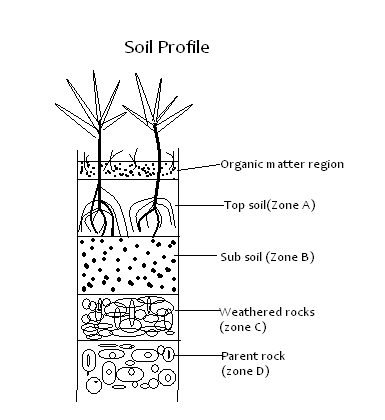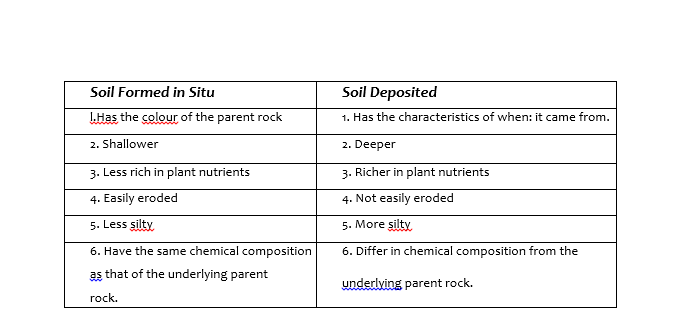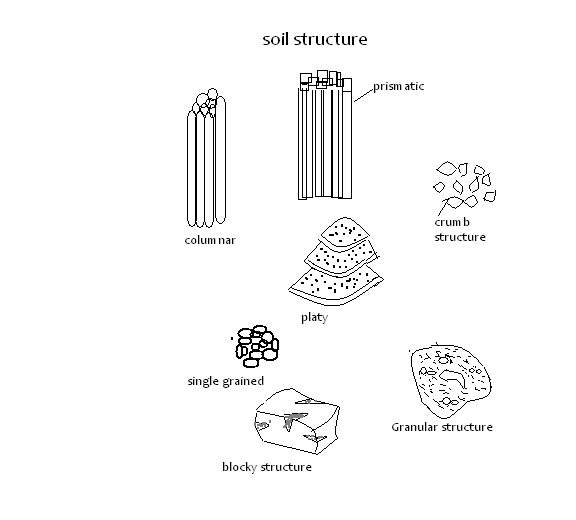Introduction
Agricultural production is influenced by external factors:
- Human factors
- Biotic factors
- Climatic factors
- Edaphic factors.
Human Factors
These are human characteristics which affect the way decisions are made and operations carried out.
Level of education and technology:
- Skills
- Technological ad van cements .
Human health/HIV-AIDS:
- These affect the strength, the vigour, vision and the determination to work.
- HIV/AIDS is the biggest threat to human health today and has long lasting effects on agriculture, such as;
- Shortage of farm labour.
- Loss of family support.
- Low living standards leading to despondency and hopelessness.
- Increased criminal activities.
- More time spent by the Government and NGO’s in Carring for the sick.
Economy;
- Stability in the countries’ economy affect agricultural production.
Government Policy:
- These are governmental laws which have been enacted to protect farmers, land and livestock.
They include:
- Food policy
- Policies on control of livestock parasites and diseases.
- Policies on marketing of both local and export products and others.
Transport and communication:
- For agricultural goods to move from the farm to the consumers.
Cultural practices and religious beliefs:
- These activities hinder important changes in a society that may bring agricultural development.
Market forces:
- Demand and supply forces which affect prices of commodities in a free market.
Biotic Factors
These are living organisms which affect agricultural production.
- Pests – Destructive organisms which destroy crops.
- Parasites – These are invertebrates which live in or on other living organisms.
- Decomposers – Organisms which act on plants and animal tissues to form
- Pathogens – Micro-organisms which cause diseases.
- Predators – Animals that kill and feed on other animals.
- Pollinators – They transfer pollen grains from the stamens to the pistil of a flower.
- Nitrogen fixing bacteria -They are micro-organisms which convert atmospheric nitrogen to nitrates ready for use by the plants.
Climatic Factors(weather elements).
- Rainfall,
- Temperature,
- Wind,
- Relative humidity
- Light.
Weather – Atmospheric conditions of a place at a given time period.
Climate – weather conditions of a place observed and recorded for a period of 30-40 years.
Rainfall
Supplies Water:
- Which is necessary for the life process in plants and animals.
- Which makes the plant turgid hence provides support.
- Acts as a solvent for plant nutrients.
- Cools the plant during transpiration.
- Which is used as a raw material in photosynthesis.
When plants lack enough water they respond in different ways as follows:
- By closing the stomata to restrict water loss.
- Hastens maturity.
- Some will roll their leaves.
Other plants have developed permanent adaptation to water stress such as:
- Growing needle like leaves.
- Develop fleshy leaves for water storage.
- Develop long roots.
- Wilting and death in extreme conditions.
Important Aspects of Rainfall:
Rainfall reliability;
- This is the dependency on the timing of the onset of the rains.
Amount of rainfall;
- Quantity of rain that falls in a given area within a given year.
Rainfall distribution ;
- The number of wet months in a year.
Rainfall intensity;
- Amount of rainfall that falls in an area within a period of 1
Temperature
- This is the degree of hotness or coldness of a place measured in degrees Celsius.
- Cardinal range of temperature is the temperature required by plant to grow and thrive well.
- Optimum range of temperatures – the best temperature for the best performance of plants.
Effects of Temperatures on Crop Production:
Low temperatures:
- Slow the growth rate of crops due to slowed photosynthesis and respiration.
- High incidences of disease infection.
- Improves quality of crops such as tea and pyrethrum.
High Temperatures
- Increase evaporation rate leading to
- Wilting.
- Hastens the maturity of crops.
- Increase disease and pest infection.
- Improves quality of crops such as pineapples, oranges and pawpaws.
Wind
Wind is moving air.
Good effects of wind include:
- Seed dispersal
- Cooling of land
- Pollination in crops
- Brings rain bearing clouds
Negative effects of wind:
- Increases the rate of evaporation of water.
- Causes lodging of cereals and distorts perennial crops.
- Increases evapo-transpiration.
- Spreads diseases and pests.
- Destroys farm structures.
Relative humidity
- The amount of water vapour in the air
- Affects the rate of evapo-transpiration.
- Forms dew which supplies soil with moisture under dry conditions.
- High humidity induce rooting in cuttings.
- Increases disease multiplication and spread.
Light
- Provide radiant energy harnessed by green plant for photosynthesis.
Important aspects of light:
Light intensity ;
- The strength with which light is harnessed by chlorophyll for photosynthesis.
Light duration;
- The period during which light is available to plants per day.
- Plant response to light duration is known as
Short-day plants – require less than 12 hours of daylight to flower and
Long-day plants – require more than 12 hours of daylight to flower and seed.
Day-neutral plants require 12 hours of daylight to flower and seed.
Light wavelength;
- This is the distance between two – successive crests of a wavelength.
- It dictates the difference between natural and artificial light.
- Chlorophyll absorbs certain wavelengths of light.
Edaphic Factors Influencing Agriculture
- These are soil factors.
- Soil is the natural material that covers the surface of the earth,
- Made of weathered rock particles and decomposed animal and plant tissues, and on which plants grow.
Importance of Soil
- Provides anchorage to the plants by holding their roots firmly.
- Provides plants with mineral salts/ nutrients which are necessary for their growth.
- Provide the plants with water.
- Contains oxygen necessary for respiration of the plants and soil micro-organisms.
Soil Formation:
- Soil is formed through weathering process.
- Weathering is the breakdown and alteration of the parent rock near the surface of the earth to a stable substance.
- Weathering process is a combination of disintegration (breakdown) and synthesis (build up) process.
- Weathering process is continuous.
Types of Weathering
- Physical weathering
- Chemical weathering
- Biological weathering
Agents of Weathering
Physical Agents of Weathering
- Include wind, water, moving ice and temperature.
- Wind – carry materials which hit against each other to break into fragments.
- Water – intensity of rainfall causes breakdown of rock.
- Moving ice – has grinding effects which tear off rock particles.
- Extreme temperature cause rocks to expand and contract suddenly peeling off their surface.
Chemical Weathering
- Affects the chemical composition and structure of the rock.
- Involves processes such as ;
- Hydrolysis,
- Hydration,
- Carbonation
Hydration;
- The process by which soluble minerals in the rocks absorb water and expand weakening the rock thus leading to disintegration.
Hydrolysis;
- The process whereby water dissolves soluble minerals in the rock weakening it.
Oxidation;
- The reaction of rock minerals with oxygen to form oxides which break easily.
Carbonation;
- The process whereby carbonic acids formed when rain water dissolves carbon dioxide,
- It reacts with calcium carbonates in limestone causing it to disintegrate.
Biological Weathering
This involves the action of living organisms, plants and animals on the rocks.
- Burrowing animals, for example, termites and moles bring soil particles to the surface exposing them to other agents of weathering.
- Big animals like, elephants, buffaloes, camels and cattle exert a lot of pressure on the rocks as they step on them due to their heavy weights causing the rocks to disintegrate.
- Earthworms take part in the decomposition of plant matter with the soil particles.
- Man’s activities like, mining and quarrying expose rocks to the surface during excavation. These activities breakdown large rocks into smaller rock particles.
- Plant roots force their way through the cracks in the rocks thus widening and splitting them.
- Humic acids formed when plant tissues decompose react with the rocks weakening them further.
- Plant remains-decompose adding humus into the soil.
Factors influencing soil formation
- Climate- (rainfall, temperature and wind)
- Biotic factors – living organisms.
- Parent material– Nature and properties of the original rock from which the soil is formed.
- Time – length of time during which the soil forming processes have taken
- Topography – influences the movement of disintegrated materials.

- It is the vertical arrangement of different layers of soil from the ground surface to the bedrock.
- These layers are also referred to as horizons.
- The layers show differences in their contents and physical properties such as colour, texture and structure.
- The layers include: organic matter region, top soil, sub-soil, weathered rocks and parent material.
Organic Matter Region
- First layer of the soil found on the surface.
- Made up of leaves and other plant remains at various stages of decomposition.
- Some soil organisms may also be found here.
Top Soil
- Has a dark colour due to the presence of humus.
- Is rich in plant nutrients and well aerated.
- It is a zone of maximum leaching (zone of eluviations)
Sub-Soil
- It is compact and less aerated.
- It is a zone of accumulation of leached material (zone of aluviation) from the top layers.
- Deep rooted crops have their roots growing up to this region.
- Hard pans normally form in this layer
Weathered Rocks
- It is also called substratum.
- Rocks at various stages of disintegration are found in this zone.
- Most of the materials found in this zone originate from the parent rock.
Parent Rock
- It exists as a solid mass which is un-weathered.
- It is the source of the inorganic composition of the soil.
- The water table is on the surface of this rock.
Soils Formed in Situ and Soils Deposited
- Soil formed in the same place and remains there is said to be in situ.
- However, soil can be formed due to deposition of soil particles carried from its original site of formation to another area which is usually in the lower areas of slopes.
- Such soils are said to have been formed through deposition.

Soil Depth
- This is the distance between top soil layer and the bottom soil layer in a profile.
- It dictates root penetration and growth
- Deep soils are more suitable for crop growth since they contain more nutrients.
- Have a larger surface are for root expansion.
- Deep soils facilitate good drainage and aeration.
Soil Constituents
Organic Matter – Dead and decaying plants and animal remains
Living Organisms – Soil organisms and plant roots.
- Micro-organisms (bacteria, protozoa and fungi)
- Invertebrates -termites,
- Earthworms and molluscs.
- Higher animals – rodents and others.
Inorganic or Mineral Matter
- Formed from the parent materials.
- Supply plant nutrients
- Form the skeleton and framework of the soil.
Air
- Found in the pore spaces of the soil.
- Used for root and organism respiration
- Used for germination of seeds.
- Helps in decomposition of organic matter.
- Regulates soil temperature.
- Regulates the movement of water through capillary action.
Water
- Dissolves mineral salts
- Maintain turgidity in plants.
- Used for germination of seeds
- Used by soil organisms.
- Regulate soil temperature
- Dictates the amount of air in the soil.
Water in the soil exists in three forms namely:
- Superfluous/Gravitational Water
- Found in the large spaces (macro-pores) in the soil particles.
- Held by gravitation forces.
- When the pores are saturated, the soil is said to be waterlogged.
- It moves and may cause leaching.
- Hygroscopic Water
- Water found in thin films on the soil particles.
- Held by strong adhesive forces between water and soil particles.
- Does not move and hence not available for plant use.
- Capillary Water
- Occupy micro-pores in the soil particles.
- Held by cohesive forces between water molecules.
- Moves through capillary action
- Available to plants for use.
Soil Structure
- This is the arrangement of soil particles in a soil horizon.
Types of Soil Structure –
- Single-grained
- Crumby
- Granular
- Prismatic
- Columnar
- Platy
- Blocky

Importance of Soil Structure on Crop Production
Soil Structure Influences
- Soil aeration
- Soil drainage and water holding capacity.
- Plants root penetrability and anchorage.
- Microbial activities in the soil.
- Circulation of gases in the soil.
Farming practices which improve the soil structure are:
- Application of inorganic manure into the soil.
- Tilling the land at the right moisture content.
- Crop rotation.
- Minimum tillage.
- Cover cropping.
Soil Texture
- It refers to the relative proportion of the various sizes of the mineral particles of soil.
Importance of Soil Texture on Crop Production;
- Influences soil fertility
- Affects the organic matter content
- Influences the drainage of the soil.
- Influences soil aeration.
- Influences water holding capacity.
- Influences the capillarity or movement of water in the soil.
Soil Textural Classes
Sandy Soils
- Made up largely of sand particles.
- Have large pore spaces hence poor in water retention.
- Easy to till (light soils).
- Freely draining.
- Low fertility due to leaching of minerals.
- Easily erodible.
Clayey Soils
- Made up largely of clayey particles.
- Have small pore spaces hence good in moisture retention.
- Difficult to till (heavy soils).
- Poorly ‘drained.
- Expand when wet, crack when dry.
- High capillary.
- Rich in plant nutrients.
Loam Soils
- About equal amounts of sand and clay.
- Moderately good in both moisture and air retention.
- Fertile soils.
Soil Colour
- This depends on the, mineral composition of the parent rock and the organic matter content.
- Soils containing a lot of iron are brownish, yellowing and reddish in colour.
- Soils with a lot of silica are white.
- Soils with a lot of humus are dark or grey.
Soil pH
- This refers to the acidity or alkalinity of the soil solution/the concentration of hydrogen ions in the soil solution.
- Soil pH is determined by the concentration of hydrogen ions (H+) or the hydroxyl ions (OH) in the soil solution.
- A pH of less than 7 means that the soil is acidic.
- A pH of more than 7 means that the soil is alkaline.
- As the hydroxyl ions (OH) in the soil increase the soil becomes more alkaline.
Influence of Soil pH Crop Growth
- It determines the type of crop to be grown in a particular area.
- Most crops are affected by either very acidic or very basic soil pH.
- Soil pH affects the choice of fertilizers and the availability of nutrients to crops.
- At low pH the concentration of available iron and aluminium in the soil solution may increase to toxic levels, which is harmful to plants.
- Very acidic or low pH inhibit the activity of soil micro-organisms.
